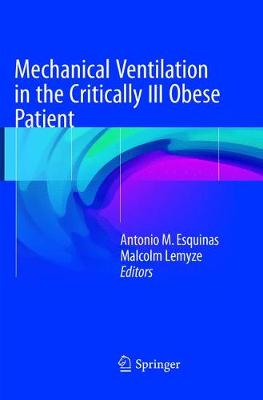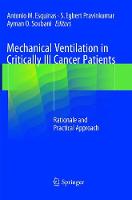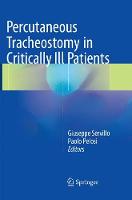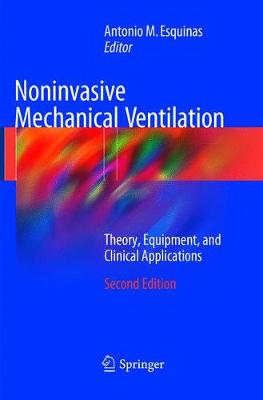Mechanical Ventilation in the Critically Ill Obese Patient
 -15%
portes grátis
-15%
portes grátis
Mechanical Ventilation in the Critically Ill Obese Patient
Esquinas, Antonio M.; Lemyze, Malcolm
Springer International Publishing AG
06/2019
315
Mole
Inglês
9783319841151
15 a 20 dias
678
Descrição não disponível.
Part I. Effects of obesity on respiratory physiology.- Effects of obesity on control of breathing.- Effects of obesity on respiratory mechanics and gas exchange.- Effects of obesity on sleep-disordered breathing.- Implications for mechanical ventilation.- Part II. Causes of acute respiratory failure in the obese patient.- Atelectasis.- Acute respiratory distress syndrome.- Community-acquired pneumonia.- Congestive heart failure.- Abdominal compartment syndrome.- Trauma.- Sleep-disordered breathing.- Drugs and medications.- Part III. Invasive mechanical ventilation in the critically ill obese patient.- Pre-oxygenation before intubation.- Difficult airway management.- Analgesia of the obese patient.- Sedation of the obese patient: indications, management, and complications.- Use of paralytics.- Positioning of the patient for mechanical ventilation.- Prevention of lung derecruitment.- Management of complications associated with mechanical ventilation.- Management of ventilator-inducedlung injury.- Management of the obese pregnant patient.- Modes of ventilation.- Weaning from mechanical ventilation.- Tracheostomy: indications and technique.- Decannulation process in the tracheostomised obese patient.- Part IV. Noninvasive ventilation and oxygen delivery in the critically ill obese patient.- The choice of interface.- The choice of ventilator and ventilator setting.- NIV in type 1 (hypoxemic) acute respiratory failure.- High-flow oxygen via nasal cannula.- NIV in type 2 (hypercapnic) acute respiratory failure.- Prevention of post-extubation respiratory failure.- NIV in the obese patient after surgery.- Determinants of NIV success or failure.- Chronic ventilation in obese patients.- Part V. Moving and feeding the critically ill obese patient.- Transportation of obese patients under mechanical ventilation.- Nutritional support in the critically ill obese ventilated patient.- Rehabilitation of obese patients under mechanical ventilation.- Part VI. Ethical issues, outcomeand costs.- Ethical issues regarding mechanical ventilation.- Long-term outcomes after mechanical ventilation.- Healthcare costs.
Este título pertence ao(s) Especialidade(s) indicados(s). Para ver outros títulos clique no Especialidade desejado.
Nasal high-flow therapy;Non-invasive mechanical ventilation;Critical care;Obesity;Mortality;Complications of mechanical ventilation;Weaning from ventilation;Acute respiratory failure;Sleep-disordered breathing;Oxygen delivery
Part I. Effects of obesity on respiratory physiology.- Effects of obesity on control of breathing.- Effects of obesity on respiratory mechanics and gas exchange.- Effects of obesity on sleep-disordered breathing.- Implications for mechanical ventilation.- Part II. Causes of acute respiratory failure in the obese patient.- Atelectasis.- Acute respiratory distress syndrome.- Community-acquired pneumonia.- Congestive heart failure.- Abdominal compartment syndrome.- Trauma.- Sleep-disordered breathing.- Drugs and medications.- Part III. Invasive mechanical ventilation in the critically ill obese patient.- Pre-oxygenation before intubation.- Difficult airway management.- Analgesia of the obese patient.- Sedation of the obese patient: indications, management, and complications.- Use of paralytics.- Positioning of the patient for mechanical ventilation.- Prevention of lung derecruitment.- Management of complications associated with mechanical ventilation.- Management of ventilator-inducedlung injury.- Management of the obese pregnant patient.- Modes of ventilation.- Weaning from mechanical ventilation.- Tracheostomy: indications and technique.- Decannulation process in the tracheostomised obese patient.- Part IV. Noninvasive ventilation and oxygen delivery in the critically ill obese patient.- The choice of interface.- The choice of ventilator and ventilator setting.- NIV in type 1 (hypoxemic) acute respiratory failure.- High-flow oxygen via nasal cannula.- NIV in type 2 (hypercapnic) acute respiratory failure.- Prevention of post-extubation respiratory failure.- NIV in the obese patient after surgery.- Determinants of NIV success or failure.- Chronic ventilation in obese patients.- Part V. Moving and feeding the critically ill obese patient.- Transportation of obese patients under mechanical ventilation.- Nutritional support in the critically ill obese ventilated patient.- Rehabilitation of obese patients under mechanical ventilation.- Part VI. Ethical issues, outcomeand costs.- Ethical issues regarding mechanical ventilation.- Long-term outcomes after mechanical ventilation.- Healthcare costs.
Este título pertence ao(s) Especialidade(s) indicados(s). Para ver outros títulos clique no Especialidade desejado.






